- Home
- slideshows
- miscellaneous
- Inside France's Elysee Palace, the French presidential residence that's larger than the White House and the Palace of Versailles
Inside France's Elysee Palace, the French presidential residence that's larger than the White House and the Palace of Versailles
The Élysée Palace, or Palais de l’Élysée, boasts 365 rooms that comprise the country's center of power.

The palace shares a name with the nearby Champs-Élysées, the iconic boulevard lined with shops that runs through the heart of Paris and ends at the Arc de Triomphe.
The mention of Élysée in the names of both landmarks references the Elysian Fields, a paradise that served as a resting place for dead heroes and others chosen by gods in Greek mythology.
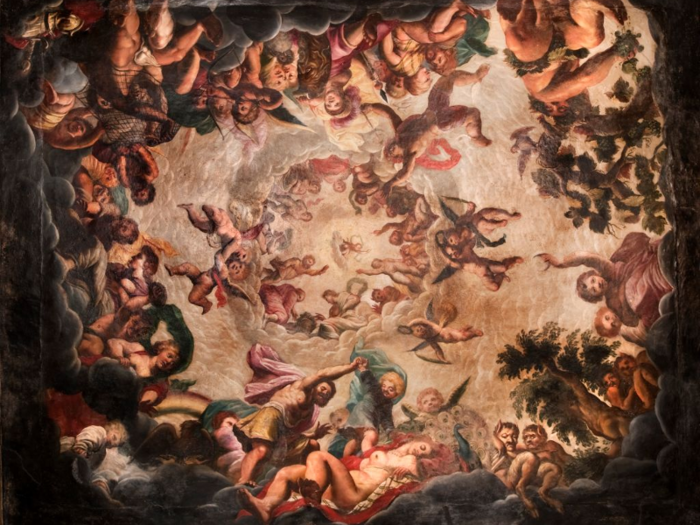
Sources: Michelin Travel, Britannica
The palace was first built by French architect Armand-Claude Mollet as a private mansion in 1722 before becoming the official home and office of French presidents in 1873.
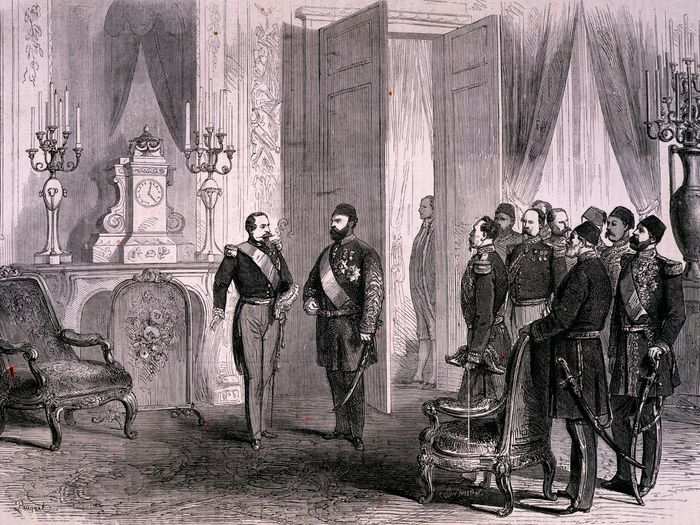
Mollet originally built the Hôtel d'Evreux for French nobleman Louis Henri de la Tour d'Auvergne, Count of Évreux.
The Marquise de Pompadour then occupied the palace before bequeathing it to King Louis XV upon her death in 1764. In the following years, the palace was a center for high society gatherings and was named Élysée in accordance with the nearby boulevard in 1797.
Even before it was an official residence, it hosted some famous names.
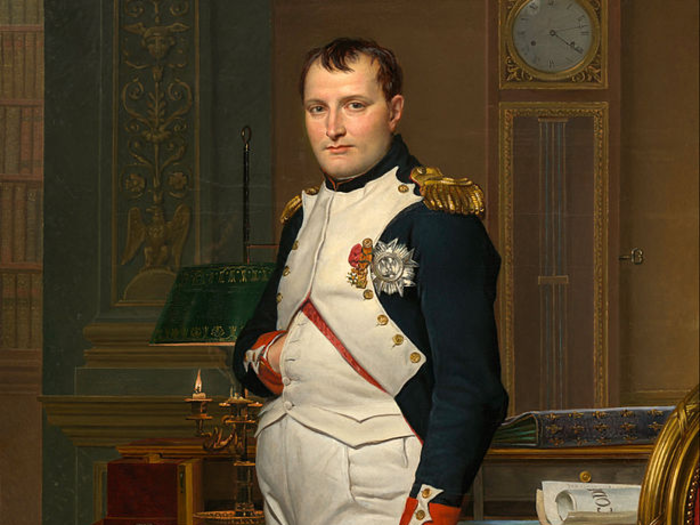
Emperor of France Napoleon Bonaparte bought the palace in 1808 and named it the Élysée-Napoleon. After the Battle of Waterloo, Napoleon returned to Paris and completed his abdication of the in the Élysée Palace on June 22, 1815.
Since its creation, the palace has featured perfectly manicured and gilded interiors that often make visitors feel they are very far set apart from the surrounding city.
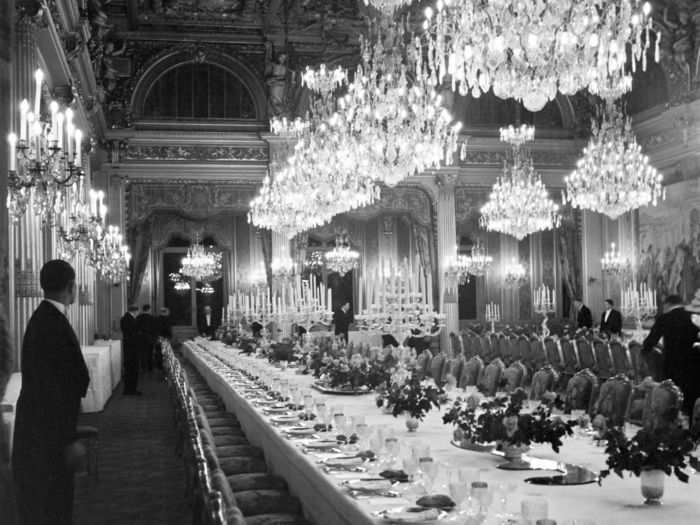
Angelique Chrisafis, Paris bureau chief for The Guardian, described her visit to the palace as feeling "shut away from real life."
I found myself sitting in a place where the silence seemed so extraordinary, so far from the normal riotous cacophony of Paris, that it felt like being shut away from real life.
Now and again you could hear the chime of a golden clock, a faint footstep on carpet, or a bird chirping in the perfectly-kept gardens that stretched out beyond the floor-to-ceiling windows. Whatever might be happening outside, here it felt as though one was perfectly muffled and cocooned; wrapped in several layers of metaphorical cotton wool and removed from it all.
The entirety of the inside of the palace is covered in gold details and stunning French art and furniture.

Records of the palace's decorations are reportedly ineffective, as hundreds of items were found to be stolen from the presidential palace.
In addition to their historical and symbolic importance, the 122 sculptures, paintings, photographs; and 546 pieces of furniture and other objects, were estimated to be worth tens of thousands of pounds.
The palace's stunning architecture engulfs the mix of rooms used for a wide array of functions and intimate meetings with visiting lawmakers and French officials.
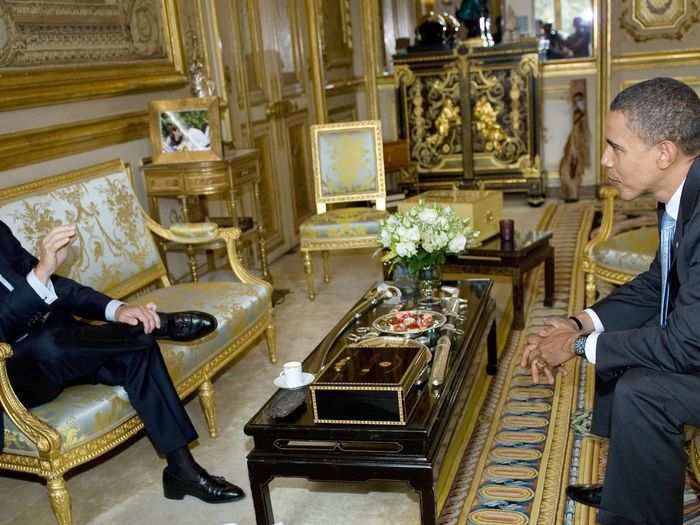
The palace sits at Number 55 on Rue du Faubourg Saint-Honoré, a public street in central Paris. The main building is secured behind a series of gates and walls.
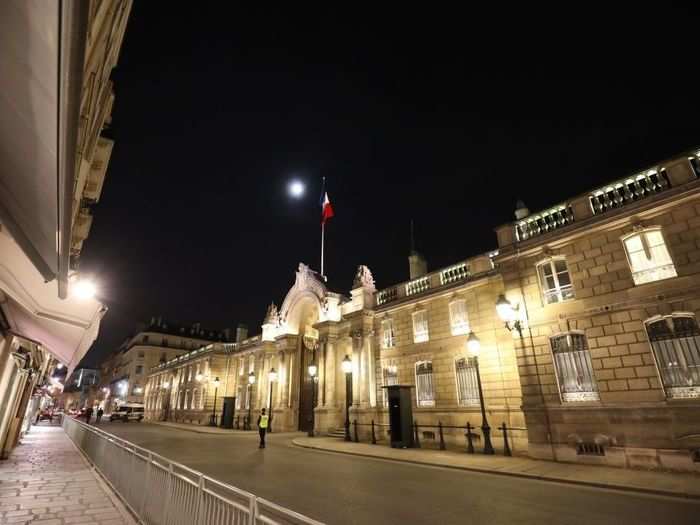
Every now and then, those gates are opened to members of the public.
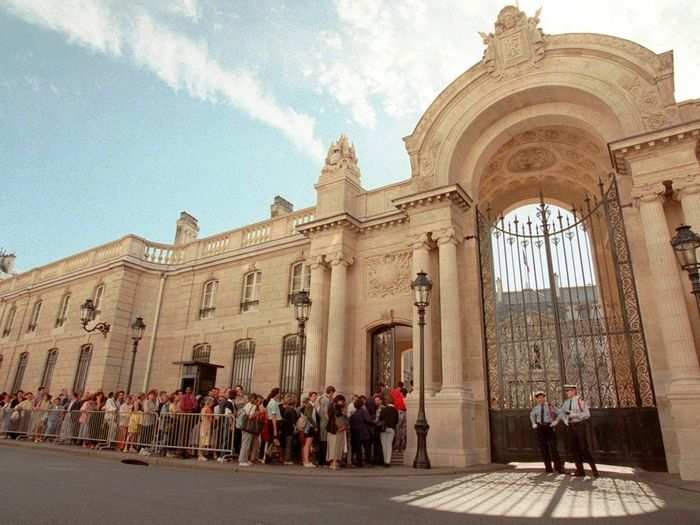
For the past 30 years, the palace has only welcomed public visitors for European Heritage Days, which take place over a weekend in September.

The holiday offers a special chance for visitors to see the glamorous quarters up close.
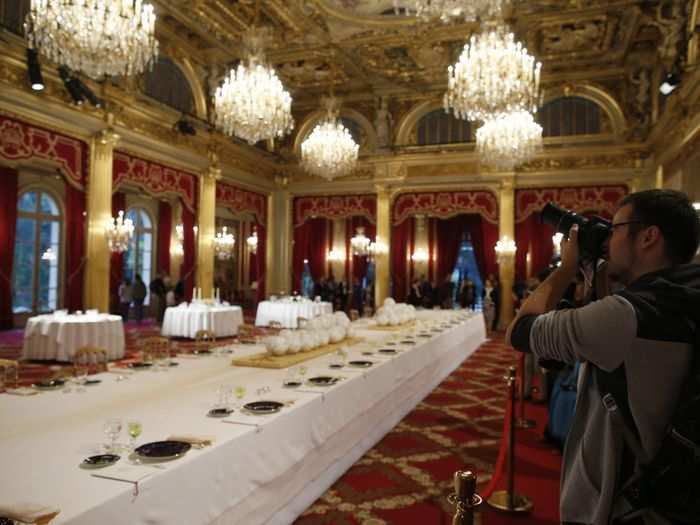
Approximately 800 members of staff keep every inch of the palace humming, including the care of thousands of pieces of furniture and cutlery in their prime state.
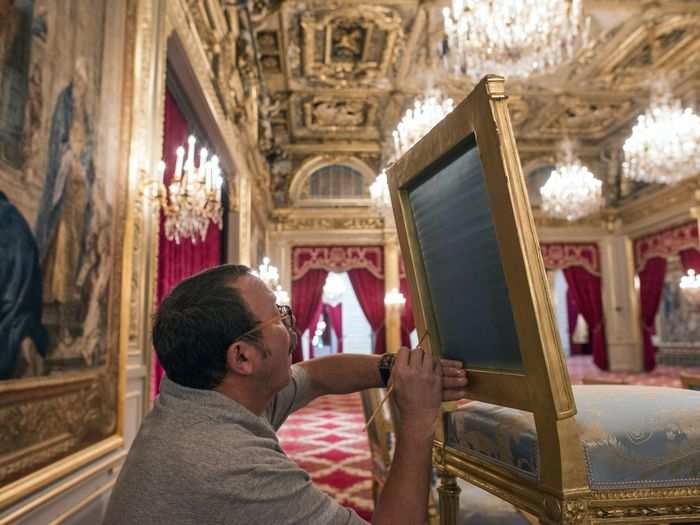
Source: Amazing Buildings
Rich interiors surround the palace's Salle des Fêtes, or "Hall of Festivities."
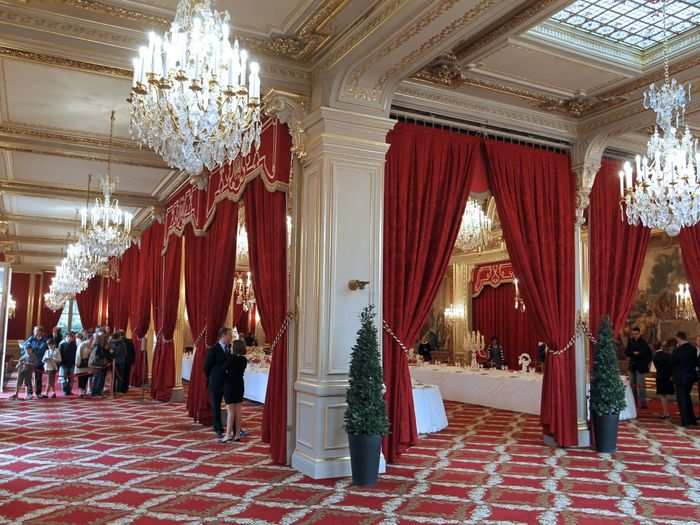
Source: Olivier Berni Intérieurs
The palace's large ballroom is a centerpiece of the palace and is used for the president's inauguration, in addition to official conferences and banquets.
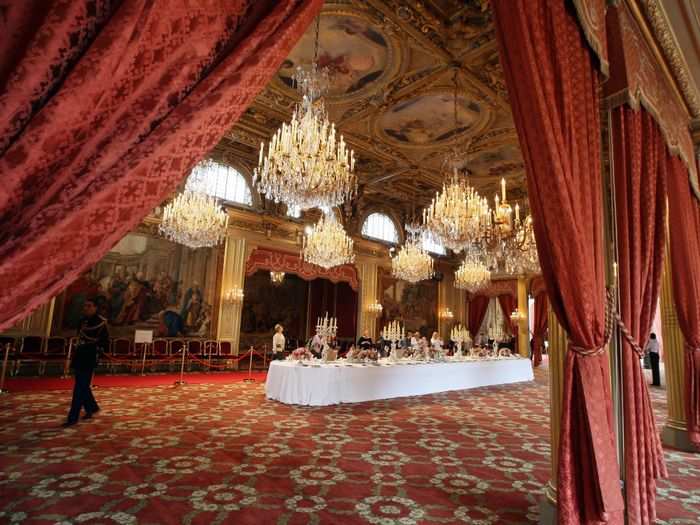
Source: Olivier Berni Intérieurs
Current President Emmanuel Macron hosts around 160 state dinners, receptions, and other events in the ballroom each year.
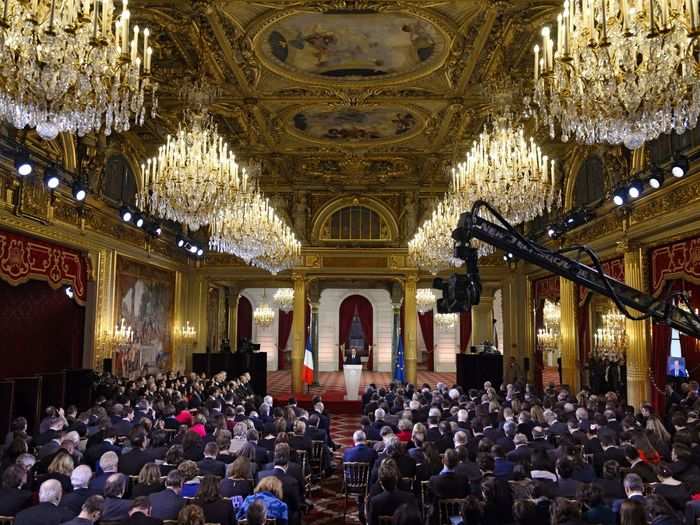
Source: The Local France
The ballroom's walls are dripping in gold like the rest of the palace, and provide a stunning backdrop for some of the president's official appearances.
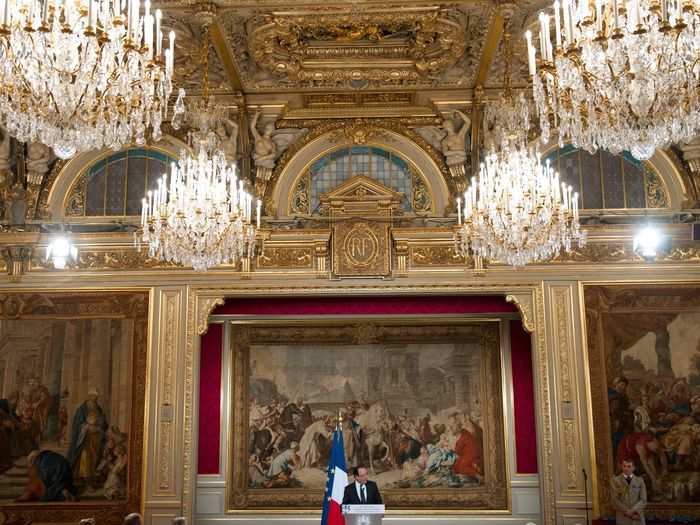
Source: Olivier Berni Intérieurs
The Salon Doré, or the "golden room" serves as the president's office and the palace's center of power.
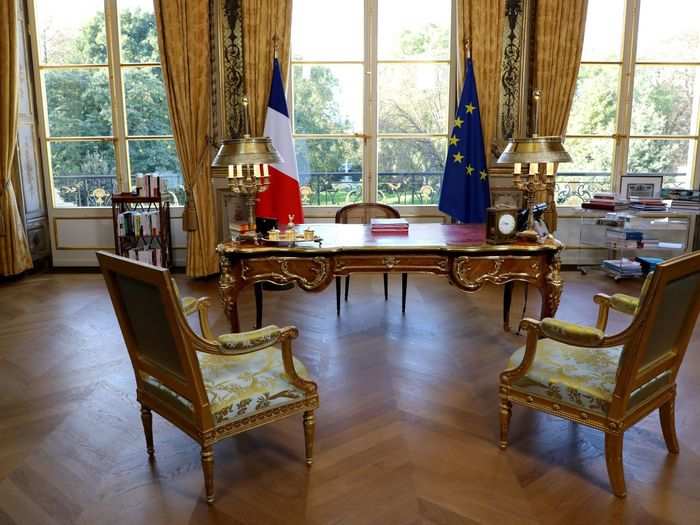
Just like the long line of American presidents who have used the Resolute Desk in the Oval Office, French presidents sit at a piece of history.
The office's large antique desk features a design with a Gallic Rooster, a symbol of France that has been used by all French presidents since Charles de Gaulle.
The palace is surrounded by a large amount of green space, which visitors can enjoy on the open days.
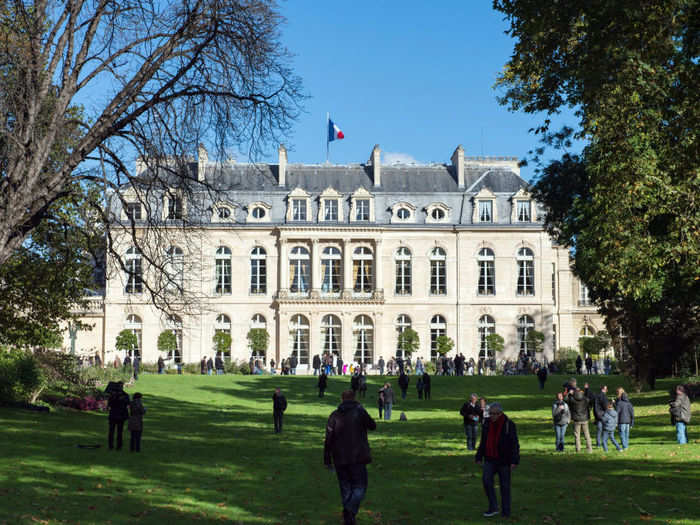
Some of the gardens closer to the palace feature more intimate, sculpted hedges.
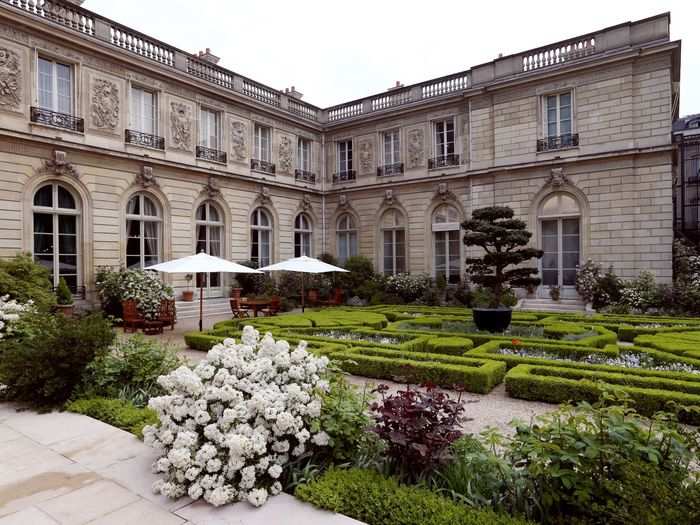
Source: St. Mary's University
The palace only started keeping records of a budget around 2008, which saw costs including staff salaries to personal spending add up to €113.6 million.
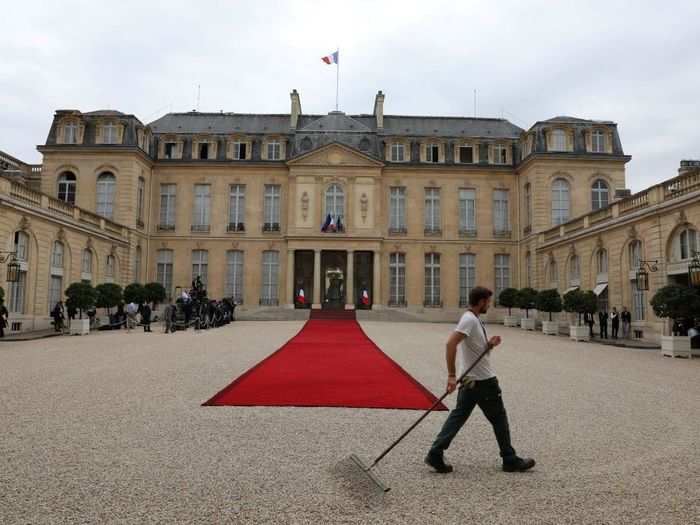
Presidents' massive spending is often a target for ridicule.
When reports surfaced that President Emmanuel Macron spent €26,000 in three months on a makeup artist, he wasn't the first French president to get called out for exorbitant spending within the budget.
His predecessor, François Hollande spent a similar €30,000 for makeup, in addition to a monthly €9,895 bill for a personal barber, years after his conservative predecessor, Nicolas Sarkozy, spent €8,000 a month on makeup.
Other palace costs get pointed at the president as well, including Macron's announcement of a €500,000 cosmetic renovation of the Salle des Fêtes, which would be the first in more than 30 years.
However, the palace's proximity to the center of Paris places it in firmly in the public eye, sometimes serving as a symbol of exorbitant wealth and power.
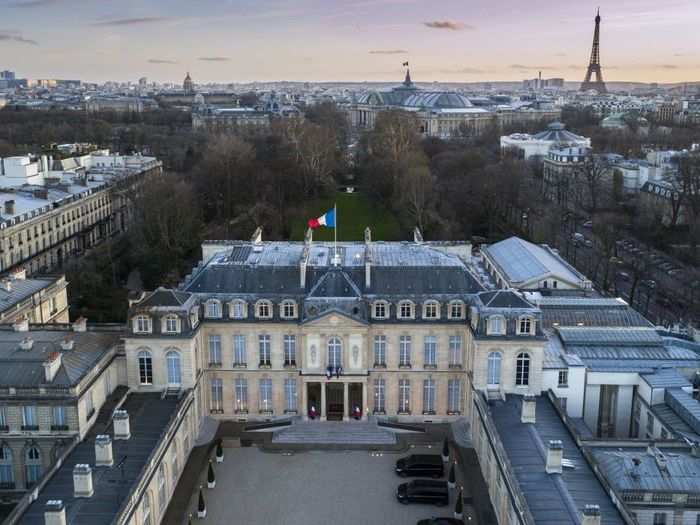
French President Emmanuel Macron was a central figure in the gilets jaunes, or yellow jacket, protests that broke out in November 2018.
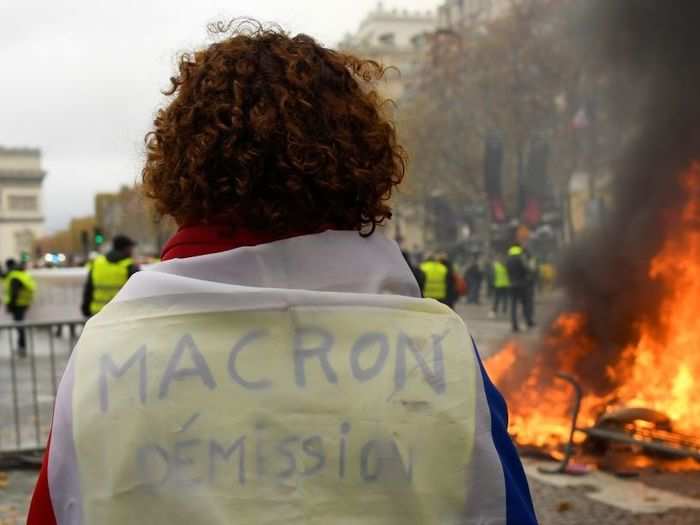
The protests started as a dispute to legislation passed by Macron that increased oil prices but extended to political spending and costs of living.
Protesters based in Paris targeted the palace, but police maintained heavily guarded barricades to prevent protesters from reaching the palace.
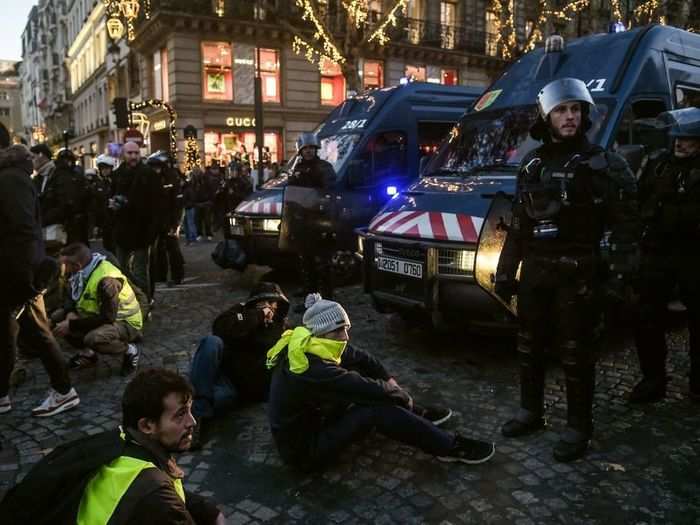
Though impressive, the palace's rich appearance has worked against presidents.
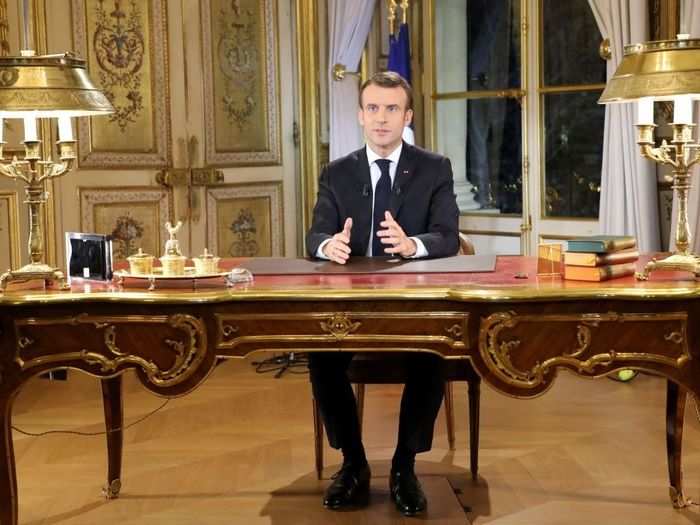
When President Macron addressed the country to respond to the gilets jaunes protesters, his appearance in front of a gilded wall and seated behind a priceless desk seemed to strike the wrong chord with many of his intended audience.
The protests continued to draw thousands for several more months until Macron announced reforms in April 2019.
Popular Right Now
Popular Keywords
Advertisement